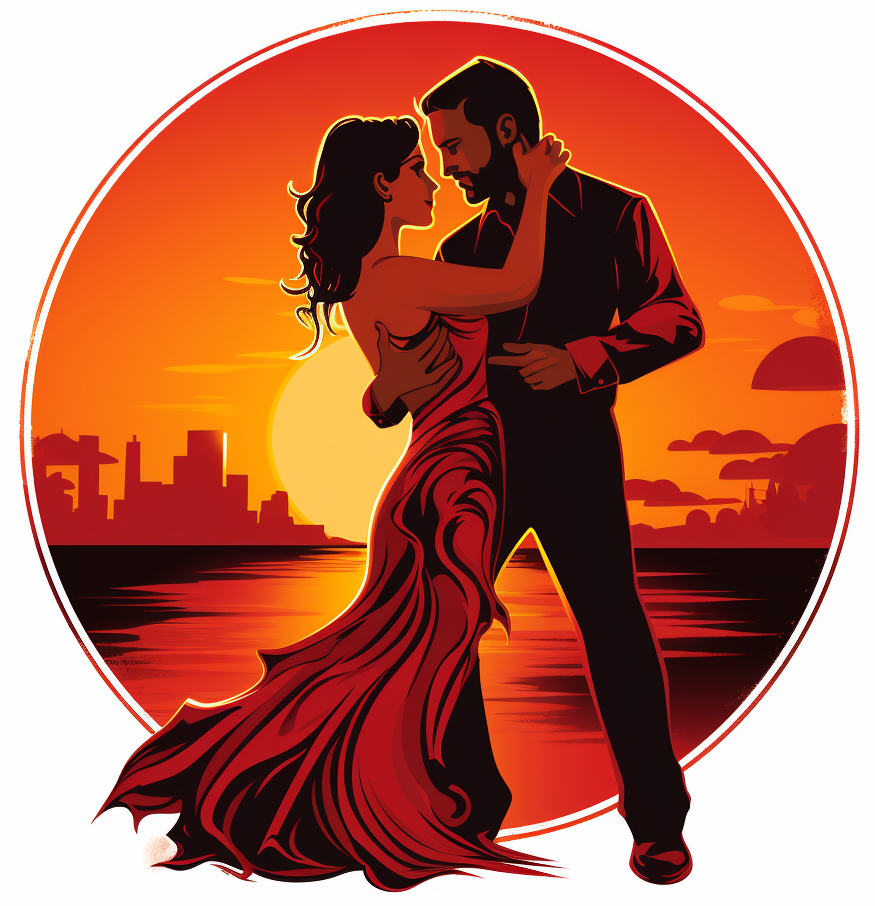Is salsa music Cuban, Colombian, US-American or Puerto Rican?
All of the above. Salsa has its roots in Cuba and there it formed as a mix of Spanish and other European and African influences, especially from West Africa around modern Nigeria. Salsa developed than mostly in Cuba and Puerto Rico and among Cuban and Puerto Rican communities in New York and spread throughout the world.
Is salsa a European music?
While salsa is not a European genre, it has been significantly influenced by European musical traditions, particularly from Spain, due to historical and colonial ties with Latin America. Salsa evolved primarily in the Caribbean and Latin American regions, but the genre has its roots intertwined with European musical elements.
Cuban music, a major influence on salsa, was shaped by a fusion of African rhythms with European melodies and harmonies, brought by the Spanish settlers. Instruments that originated in Europe, such as the piano, trumpet, and trombone, are central to the salsa sound. Also, the ‘son,’ a foundational genre of salsa, combines Spanish verse-chorus structures and lyrical traditions with African percussion and rhythms.
However, it’s important to note that salsa music is a product of the New World, blending these European elements with indigenous and African influences to create a distinct and vibrant musical genre. Today, salsa is a global phenomenon, enjoyed and produced by many cultures worldwide, including numerous European salsa artists and enthusiasts.
Is salsa an African music?
While salsa is not strictly an African genre, it undeniably has deep African roots. The genre grew out of various Latin American and Caribbean styles, which themselves were heavily influenced by African rhythms and instruments brought by enslaved Africans to the Americas. This African influence is essential to the distinctive sound and rhythm of salsa music.
And salsa itself from its Caribbean and American roots influenced many musicians and dancers all across the world.
Where is salsa music popular?
Salsa music, while rooted in Latin America, has captivated audiences worldwide, gaining popularity in diverse geographies and cultures. In its birthplaces – Cuba and Puerto Rico – and across the broader Latin American region, including countries like Colombia, Venezuela, and the Dominican Republic, salsa is a part of everyday life. It’s not uncommon to hear the energetic rhythms and vibrant melodies of salsa in homes, local eateries, and on street corners, as well as on the radio and at festivals.
But the reach of salsa extends far beyond Latin America. In the United States, especially in cities with significant Latin populations like New York, Miami, and Los Angeles, salsa music and dance have become integral to the cultural fabric. Salsa clubs and social dance events are common, drawing diverse crowds and fostering vibrant communities centered around this dynamic art form.
Globally, salsa has found a home in many European, Asian, and African cities. From London to Tokyo, salsa clubs are increasingly popular, hosting regular social dances known as ‘salsatecas’ or ‘salsa socials’. Through these gatherings, participants not only engage with the music and dance but also partake in the cultural exchange and community that salsa fosters. Thus, salsa music, born out of a blend of cultures, continues to unite people worldwide in its rhythm and spirit.
What are the best places to dance salsa
The energetic rhythm of salsa music has fostered thriving dance scenes in cities around the world, each adding their unique flavor to the dance. Cuba, the birthplace of salsa, is an unparalleled destination for dancing Cuban salsa. The streets of Havana teem with passionate dancers and vibrant rhythms, reflecting the rich musical heritage of the island.
In the United States, New York City, home of the New York style salsa (also known as ‘On2’), is a must-visit. Its salsa scene is renowned for its precision, complex turns, and the fusion of dance elements from jazz and mambo. Miami, with its thriving Latinx community, is another hotspot for salsa, offering a fusion of different styles. Los Angeles, too, has a vibrant salsa scene, known for the LA style salsa, characterized by intricate footwork, theatrical lifts, and dips.
Cali, Colombia, known as the ‘World Capital of Salsa’, is famous for its distinct style, marked by quick footwork and a unique rhythm. European cities like London and Berlin also have lively salsa communities, hosting numerous salsa clubs and festivals.
Moreover, salsa’s reach extends to Asian cities like Shanghai, where salsa clubs are on the rise, and even Ulaanbaatar, Mongolia, where salsa has taken root in the local dance culture. Each of these cities provides a unique environment for dancing salsa, reflecting the universal appeal and adaptability of this lively dance form.
The best place however is the place close to you with a friendly and welcoming social dance scene.
Best places to learn salsa
Learning salsa, a vibrant dance form deeply rooted in Latin American culture, can be a delightful and enriching experience. In many Latin American countries, especially Cuba and Colombia (particularly Cali), salsa music is ubiquitous, and people often learn to dance informally at home or at community gatherings from an early age. The dance is typically learned by observation and imitation, with less emphasis on formalized steps or figures. However, even though the basic steps are commonly known, fewer people attend formal classes, resulting in a smaller number of dancers mastering complex figures and turns compared to communities outside Latin America.
In contrast, learning salsa in non-Latin countries often involves a more structured approach. Dance schools, community centers, and even some fitness clubs offer salsa classes, covering everything from basic steps to advanced figures and partner work. These classes often focus not only on physical moves but also on understanding the rhythm, the culture, and the essence of salsa dance.
Learning with friends or joining local salsa groups can also be a great starting point. Many cities have social salsa nights, where beginners can learn in a relaxed, fun environment. Online tutorials and dance apps have also made learning salsa accessible to everyone, everywhere.
Whether through informal gatherings, structured classes, or online learning, the key to learning salsa is practice, immersion in the music, and, most importantly, enjoying the dance’s vibrant spirit.
How popular is salsa music around the world?
Salsa music enjoys immense popularity around the globe, and its infectious rhythms have made it a favorite among music lovers and dancers alike. It’s difficult to estimate the exact number of salsa fans worldwide, but indicators such as the global proliferation of salsa clubs, festivals, and dance schools suggest a considerable following. For example, in Europe alone, there are estimated to be several thousands of salsa clubs, while in the United States, salsa music and dance have permeated mainstream culture.
In terms of dancers, it’s estimated that millions engage in salsa dancing around the world, both socially and competitively. Cities from London to Tokyo host regular salsa socials and congresses, attracting thousands of participants. The World Salsa Championships, held annually, draw competitors from over fifty countries.
The popularity of salsa music extends beyond the dance floor, as well. Countless fans enjoy the genre for its energy, its storytelling, and its rich, diverse rhythms.


